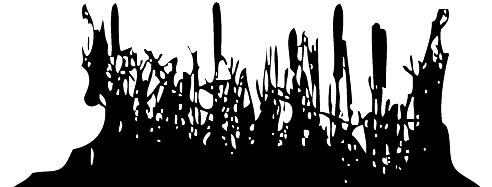Français
Finding Our Talk Season One
- Episode 1: Language Among the Skywalkers: Mohawk
- Episode 2: Language Immersion: Cree
- Episode 3: The Trees are Talking: Algonquin
- Episode 4: The Power of Words: Inuktitut
- Episode 5: Words Travel On Air: Attikamekw/Innu
- Episode 6: Language in the City: Ojibway/Anishinabe
- Episode 7: Getting Into Michif: Michif
- Episode 8 : Plains Talk: Saulteaux
- Episode 9: Breaking New Ground: Mi'kmaw
- Episode 10: A Silent Language: Huron/Wendat
- Episode 11: The Power of One: Innu
- Episode 12: Syllabics: Capturing Language: Cree
- Episode 13: A Remarkable Legacy: Saanich
Finding Our Talk Season Two
Finding Our Talk Season Three
Episode 1: Language Among the Skywalkers - Mohawk
This is the story of the legendary Mohawk ironworkers and of new approaches to language instruction for both adults and children within the contemporary community of Kahnawake
Part 1
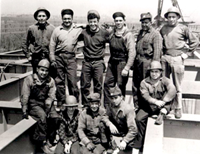 The Mohawk ironworkers are known worldwide: men from various Mohawk communities whose ability to climb and work in high places was legendary and valued in the construction of some of the world’s famous landmarks, notably the World Trade Centre, the Brooklyn Bridge in New York and the Mercier and Victoria bridges in Montreal. Less well-known is that the language of work for the ironworkers was Mohawk. Iron work helped build the community of Kahnawake and to this day is still an important source of income for many families.
The Mohawk ironworkers are known worldwide: men from various Mohawk communities whose ability to climb and work in high places was legendary and valued in the construction of some of the world’s famous landmarks, notably the World Trade Centre, the Brooklyn Bridge in New York and the Mercier and Victoria bridges in Montreal. Less well-known is that the language of work for the ironworkers was Mohawk. Iron work helped build the community of Kahnawake and to this day is still an important source of income for many families.
In this segment, we meet Billy Two Rivers, a local historian and former ironworker himself, who explains that the Mohawk men always worked in their own language. Whenever a rookie came to the job site, he had to speak the Mohawk language, and if he didn’t know it, he had to learn it. In this way, these men were instrumental in preserving the language from generation to generation.
 We also meet a group of retired ironworkers who are some of the most fluent speakers in Kahnawake: Les Albany, Frank W. Nolan, Thomas Albany and Robert Diabo. The men share work stories, which are evoked through archival film and photos, and describe how they were able to keep their language through their trade.
We also meet a group of retired ironworkers who are some of the most fluent speakers in Kahnawake: Les Albany, Frank W. Nolan, Thomas Albany and Robert Diabo. The men share work stories, which are evoked through archival film and photos, and describe how they were able to keep their language through their trade.
But, even as the community of Kahnawake prospered, partly through the ironworkers’ income, the language began to decline in the community and among the ironworkers themselves. The men cite various factors influencing this decline: the expansion of English, the invasion of television, changing work and school environments and encroaching French language laws. During the 1970’s, people began to be aware of threats to the language and it was then that the community realized something had to be done to protect it.
Part 2
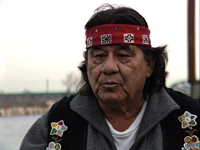 Through a series of circumstances, both social and political, the community of Kahnawake began to take strides in reclaiming the Mohawk language. The French language law of 1977 required all children, including Mohawk children, to be schooled in French. Billy Two Rivers explains how the Mohawk people fought back by taking their children out of the surrounding schools and taking control of their own education.
Through a series of circumstances, both social and political, the community of Kahnawake began to take strides in reclaiming the Mohawk language. The French language law of 1977 required all children, including Mohawk children, to be schooled in French. Billy Two Rivers explains how the Mohawk people fought back by taking their children out of the surrounding schools and taking control of their own education.
The Kahnawake Survival School was created, dedicated to teaching relevant cultural materials and language to high school students. In following years, other Mohawk language immersion programs were implemented, among them, a program at Karonhianonha School that teaches Mohawk to children as young as two.
Although the community had Mohawk immersion programs for the children, their parents had grown up during a period when the language was in decline, creating a situation in which they could not communicate in their own language. The Language Centre in Kahnawake was founded to address this generational gap, providing evening courses in Mohawk for adults.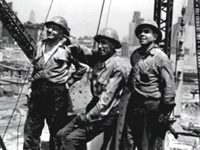
At the Centre, we meet Lawrence Francis, a former iron worker, as he teaches one of his classes, as well as language workers discussing the situation and their objectives in this program. Lawrence discusses the difficulty of teaching language to adults as compared with children.
Even though the community has had immersion programs for children with a curriculum in place, this is not true for adult courses where most programs must start from scratch. Lawrence and other language workers believe that the language will survive, as it has since the first contact with Europeans, with the help of the many language programs being implemented in the Kahnawake community.
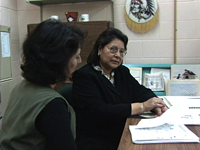 Language Keeper
Language Keeper
Dorothy Lazore is a Mohawk educator who was instrumental in designing and developing curriculum for immersion programs currently being used to teach language in Kahnawake. She has a university education in linguistics and language teaching and has been involved in education most of her life. She is interviewed in Tyendinaga where she is a Native language teacher at the elementary and secondary levels.
